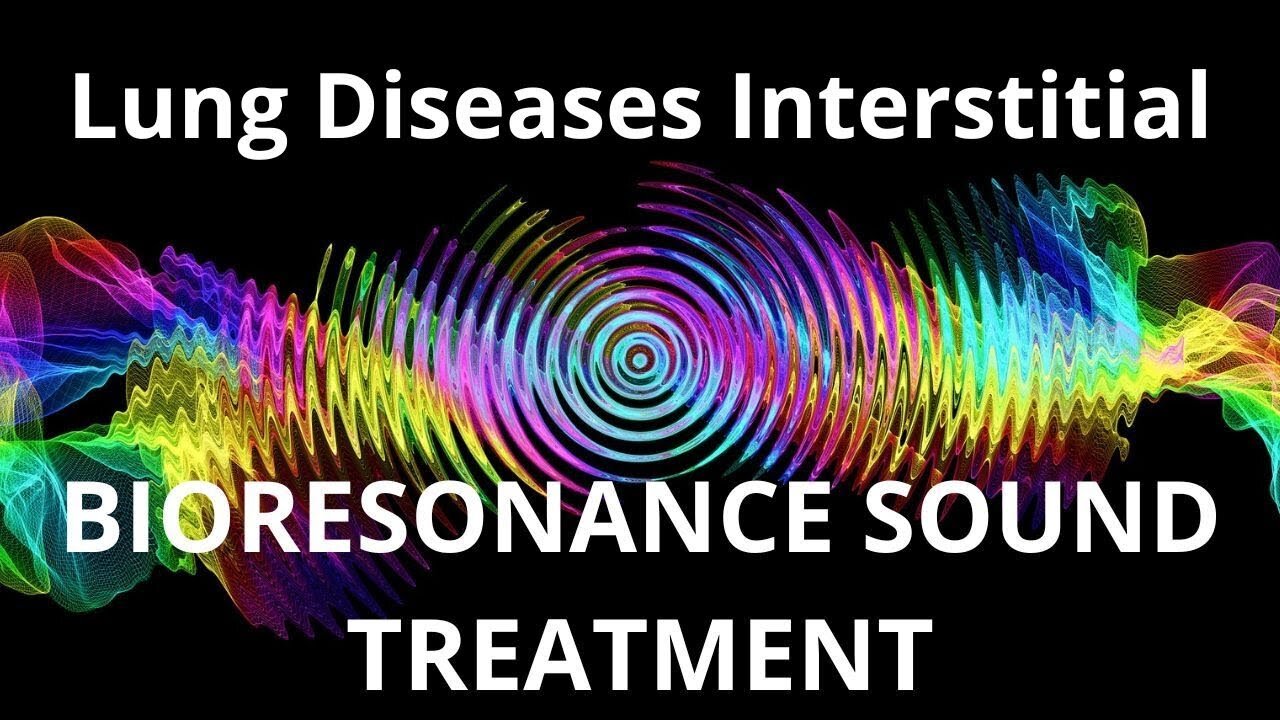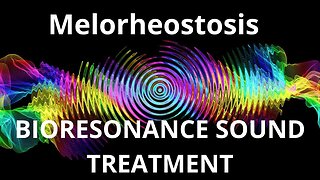Premium Only Content

Lung Diseases Interstitial_Sound therapy session_Sounds of nature
#soundtherapy, #LungDiseasesInterstitial, #complementarytreatment, #traditionalmedicine, #holisticapproach, #respiratoryhealth, #pulmonaryconditions, #lungfunction, #medicalresearch, #wellness
Lung Diseases Interstitial encompass a group of chronic respiratory conditions that affect the lung tissue, leading to inflammation, scarring, and impaired lung function. While traditional medicine plays a crucial role in managing these conditions, there is growing interest in complementary therapies that can enhance the treatment process. Resonant frequency sound therapy is emerging as a promising complementary treatment for Lung Diseases Interstitial, offering unique benefits that can complement conventional medical interventions.
Resonant frequency sound therapy utilizes specific sound frequencies to stimulate healing responses in the body. These frequencies are believed to resonate with the body's energy fields, promoting balance and harmony. By using sound as a therapeutic tool, resonant frequency sound therapy aims to address imbalances and support the body's natural healing processes.
One of the primary benefits of resonant frequency sound therapy for Lung Diseases Interstitial is its potential to reduce inflammation and promote healing in the lung tissue. The specific sound frequencies used in therapy can help rebalance the body's energy flow, leading to a reduction in inflammation and an improvement in the healing process. By supporting the body's natural ability to repair damaged lung tissue, sound therapy can contribute to improved respiratory function.
Resonant frequency sound therapy can aid in improving breathing patterns and increasing lung capacity for individuals with Lung Diseases Interstitial. The targeted sound frequencies used in therapy can help relax the respiratory muscles, reduce tension, and enhance lung expansion. This can lead to improved oxygenation, better airflow, and a more efficient exchange of gases within the lungs. As a result, individuals may experience reduced shortness of breath and enhanced overall respiratory function.
Living with Lung Diseases Interstitial can be emotionally challenging, and stress can exacerbate symptoms and impact overall well-being. Resonant frequency sound therapy promotes relaxation, reduces stress, and improves emotional well-being. The soothing sounds used in therapy induce a state of deep relaxation, alleviating anxiety and promoting a sense of calm. This can have a positive impact on the management of Lung Diseases Interstitial and contribute to an improved quality of life.
Resonant frequency sound therapy offers a complementary approach to traditional medicine for individuals with Lung Diseases Interstitial. By incorporating sound therapy into the treatment plan, it can enhance the effects of conventional medical interventions and provide additional support for managing the condition. This holistic approach aims to optimize the body's ability to heal and recover, improving overall treatment outcomes and well-being.
Conclusion:
As the field of complementary therapies continues to evolve, resonant frequency sound therapy is emerging as a promising complementary treatment for Lung Diseases Interstitial. Its potential to reduce inflammation, promote healing, enhance breathing, reduce stress, and improve emotional well-being makes it a valuable addition to the treatment plan.
TO ACHIEVE A POSITIVE RESULT, DAILY LISTENING TO VIDEOS IS REQUIRED.
I wish you health and prosperity!
You can purchase unique medicines in my store:
https://store11998180.company.site/
You have the opportunity to support the channel:
https://destream.net/live/RadSiarAl/donate
-
 30:00
30:00
BIORESONANCE SOUND THERAPY
13 days agoMelorheostosis _ Sound therapy session _ Sounds of nature
731 -
 1:40:27
1:40:27
megimu32
2 hours agoOTS: Labor Day Sitcom Blowout - Tim, Ray, & Relatable Chaos!
12.2K3 -
 LIVE
LIVE
StevieTLIVE
2 hours agoWarzone Wins w/ FL Mullet Man
81 watching -
 1:04:01
1:04:01
BonginoReport
5 hours agoLefties Wish Death on Trump but He’s BACK! - Nightly Scroll w/ Hayley Caronia (Ep.125)
163K62 -
 LIVE
LIVE
Tundra Tactical
2 hours ago $0.48 earnedWe Survived the Military… But Not This Basement
101 watching -
 20:12
20:12
Clownfish TV
10 hours agoDisney Needs MEN Back?! They ADMIT Star Wars and Marvel are DEAD!
9.35K19 -
 LIVE
LIVE
Anthony Rogers
9 hours agoEpisode 381 - Tim Kelleher
52 watching -
 1:01:42
1:01:42
The Nick DiPaolo Show Channel
7 hours agoTDS Hits New Level! | The Nick Di Paolo Show #1786
43.5K31 -
 1:02:27
1:02:27
Michael Franzese
5 hours agoFace to Face with a Former Chinatown Gangster Turned NYPD Detective
45K13 -
 1:31:25
1:31:25
The Confessionals
10 hours agoThe Queen of Heaven Exposed (Hathor, Lilith & Ancient Gods Return)
29.4K5